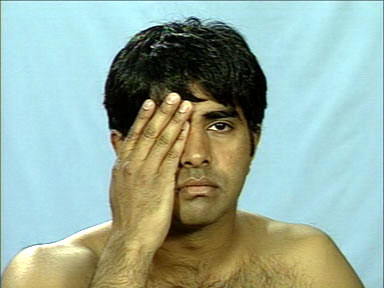I saw Avatar in 3D this weekend, and tried to approach the 3D with an open mind. I've always had a negative inclination about the technology, but the experience turned that inclination into a well-supported opinion. Not only does it not add anything to the theatrical experience, it's an eyesore that detracts from the experience. Why the 3D in Avatar is aesthetically displeasing:
1. Unless an object moves very slowly across the screen, the motion is unrealistically stuttered, almost looking like it's being lit by a strobe light.
2. Shallow focus shots look terrible. As anyone with a background in photography will tell you, the usage of a telephoto lens, which is used to get shallow focus, has a flattening effect on the image it shoots. Cameron still tried to employ 3D on these shots, and they became difficult to look at.
3. Hypersituated objects look silly. In 2D, it's one thing to have a hypersituated object at the edge of a frame get cut off. It's like something just simply isn't in a person's field of vision. But in 3D, it looks like only part of the object even exists, and becomes distracting.
4. The bright spots on screen are simply excruciating. 3D works by focusing the light bouncing off the screen in a specific direction. The low-key scenes in Avatar have many bright spots coming from the key light on the actors bodies. The light from these bright spots becomes focused on the eyes of the viewer, and if not just causing wincing, could possibly cause eye damage if the viewer is exposed to them for long enough. Of course, I'm not an optometrist so don't take my word for it.
5. The wide angle, slower shots where the 3D itself isn't an eyesore draw a lot of attention to themselves. Since I tend to pay very close attention to the way the film is shot, this actually isn't much of a problem for me, but others who want to focus on the surface aspect of the film - i.e. the story - might be distracted.
All that being said, I found a way to combat the effects of 3D in the theater:
Since I couldn't take nearly 3 hours of aggravated assault on my eyes, I found myself trying to fight back against the screen. First, I tried taking off the glasses. The film was still watchable, though more in that poor-quality-Hong Kong-DVD way. The image was a bit blurry, but was at least more manageable. Then, I simply blinked with one of my eyes, and came to the realization that the 3D only works if I had both my eyes open.
As I mentioned earlier, Avatar is the biggest of the 3D movies thus far, and industry analysts are trying to use the success of the film as proof that 3D is "the future of cinema." The question then becomes: why is Avatar a success? I would argue that it's mostly out of curiosity for the movie itself, not out of audience "demanding" 3D. Compare Avatar's success to Disney, who have already had a few major disappointments with 3D in the box office returns of A Christmas Carol, G-Force, and Bolt.
Considering the sizable backlash against the 3D and large amount of negative critiques, I'm pretty certain that there's going to be enough skepticism in the public that future 3D films will see diminishing returns, and eventually a repetition of the failures of 3D in the 50's and the 80's. If not, I guess I can always cover one eye.
As far as my thoughts on the movie itself go, I actually rather liked Avatar for what it was. The narrative was a bit predictable and very heavy-handed, but the art direction was appealing, the cinematography gave the actors enough breathing room, and the action sequences were well edited and very entertaining. It's by no means an excellent film, but it was enjoyable commercial fare.
Tuesday, January 12, 2010
Subscribe to:
Post Comments (Atom)

No comments:
Post a Comment